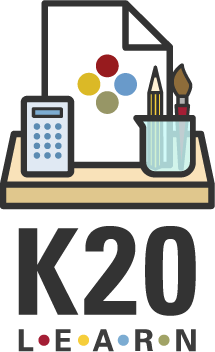Summary
This educator resource introduces students to photojournalism, photography basics, and digital cameras. Students examine famous examples of photojournalism and discuss how photography can be used to tell stories. Students then learn about digital camera settings and practice taking photos with a camera simulator. To conclude the lesson, students use digital cameras to take a series of three photographs that tell a story. Students present their photographs to their peers who offer feedback on each series of photos.
Essential Question
How do photojournalists capture stories?
Snapshot
Engage
Students make inferences about a news story and discuss what could be added to the story, then make observations and inferences about a famous photograph.
Explore
Students examine famous photographs and discuss the stories conveyed by the photographs.
Explain
Students learn how digital cameras work and experiment with different camera settings.
Extend
Students practice taking photos with digital cameras then take a series of photographs that tell a story.
Evaluate
Students present their photos to the whole class and provide feedback on their peers’ photos.
Materials List
Activity Slides (attached)
Famous Photos document (attached; one per class)
Photo Analysis handout (attached; one per student)
TIP Chart handout (attached; one per student)
CameraSim Task Cards (attached; one set per student)
Photo Feedback handout (attached; one per student)
DSLR cameras
Devices with internet access
Learning Goals
Discover how photographs tell a story.
Describe the components of cameras.
Create stories with photographs.
Engage
10 Minute(s)
Use the attached Activity Slides to facilitate this activity. Begin by displaying slide 2 and introducing the topic of the activity. Display slides 3–4 and share the essential questions and learning goals with students.
Move to slide 5 and share the mockup of a newspaper page without photos. Prompt students to share out what they see missing from this page as compared to a typical newspaper page. Students should respond that the photographs are missing. Have students read through the newspaper headlines and discuss with a partner what they think the missing photographs would look like. Invite students to share out how adding photographs to a newspaper enhances storytelling.
Display slide 6 and introduce the well-known example of photojournalism on the slide. Introduce students to the I Notice, I Wonder instructional strategy. Have students examine the photo and discuss observations and questions with a partner. Invite a few students to share out their observations and questions.
Ask students to further discuss with their partners what they think is happening in the photo and what the story behind the image may be. Invite individuals to share out their thoughts.
Show slide 7 and inform students that the question of what is happening in a photo is central to photojournalism. Tell them that photojournalism is about capturing pictures that tell a story.
Explore
15 Minute(s)
Display slide 8 and pass out one copy of the attached Photo Analysis handout to each student. Draw students attention to the Famous Photos, whether they are displayed around the room or available digitally.
Have students examine the photos and take notes about observations and inferences related to each photo using their Photo Analysis handouts. Encourage them to think about what they see in the photo when recording observations and think about what the photographer is trying to say with the photo when writing inferences.
Show slide 9 and introduce more background information on photojournalism. Discuss these with students to the extent you feel necessary.
Move to slide 10 and have students discuss the stories they believe are being told in each of the Famous Photos. For each photo, invite a few volunteers to share the story they believe is being told by the photo. After some discussion, reveal the background of photograph.
Explain
40 Minute(s)
Pass out one copy of the attached TIP Chart handout to each student and introduce the TIP Chart instructional strategy. Display slide 11 and briefly explain the photography terms on the slide to students. Have students add information about each term on their charts and draw a picture to represent each term.
Move to slide 12. Show students the video How Digital Cameras Work|How Things Work with Kamri Noel to reinforce the previously discussed terms.
Show slide 13 and pass out one copy of the attached CameraSim Task Cards to each student. Have students access the CameraSim website on their personal devices. Allow them time to complete the tasks.
Extend
20 Minute(s)
Have students use the school’s digital cameras to practice taking photographs. Organize students into groups depending on the number of cameras available and the number of students participating. Have them learn to take different photographs by experimenting with the camera settings. If possible, provide the manuals included with the digital cameras as resources for students. Have them take several photos with different settings to see the different results.
Show slide 14 and introduce the next task. Have students visit a place or event and take three photos that tell a story. Encourage students to brainstorm where in their communities they can capture different parts of life.
Determine how much time students will have to take their photos based on the number of cameras available. Communicate the parameters and timeline to your students and clarify how long each student will be given a DSLR camera.
Evaluate
20 Minute(s)
After students have had time to take three photos, display slide 15. Have each student present their photos to the class. Introduce the TAG Me strategy to students and provide each student with the attached Photo Feedback handout. As each student presents their photos, students that are being presented should use the Photo Feedback handout to think of feedback that can be given to students after they present.
Follow-Up Activities
Consider having students that enjoyed the photo project take photos at school events. These photos could be displayed digitally or physically around the school.
Research Rationale
Research rationale for this resource is provided in the literature review, When “Journalism” Kids Do Better: A Reassessment of Secondary and Postsecondary Achievement and Activities.
Resources
Hine, L. W. (1908, December 3). A little spinner in the Mollahan Mills, Newberry, S.C. [Photograph]. Library of Congress. https://www.loc.gov/item/2018674902/
K20 Center. (n.d.). I notice, I wonder. Strategies. https://learn.k20center.ou.edu/strategy/180
K20 Center. (n.d.). TAG me! Strategies. https://learn.k20center.ou.edu/strategy/2873
K20 Center. (n.d.). TIP chart. Strategies. https://learn.k20center.ou.edu/strategy/185
K20 Center. (n.d.). When “journalism” kids do better: A reassessment of secondary and postsecondary achievement and activities. Literature Review. https://learn.k20center.ou.edu/literature-review/4897
Lange, D. (1936, March). Destitute pea pickers in California. Mother of seven children. Age thirty-two. Nipomo, California [Image]. Library of Congress. https://loc.gov/pictures/resource/ppmsca.12883/
Nat Geo Kids. (2018, November 19). How digital cameras work | How things work with Kamri Noel [Video]. YouTube. https://www.youtube.com/watch?v=Ey6S3rKH_o4
Parks, G. (1942, August). American Gothic [Photograph]. Wikimedia Commons. https://commons.wikimedia.org/wiki/File:Gordon_Parks_-_American_Gothic.jpg
Sargent, R. F. (1944, June 6). Into the jaws of death [Photograph]. Wikimedia Commons. https://en.wikipedia.org/wiki/Into_the_Jaws_of_Death#
Souza, P. (2012, March 29). Hair like mine [Photograph]. Wikipedia. https://en.wikipedia.org/wiki/Hair_Like_Mine#/media/File:Boy_feeling_Barack_Obama’s_hair.jpg
Women working in the munitions industry during the First World War [Photograph]. (1917, May). Wikimedia Commons. https://commons.wikimedia.org/wiki/File:Women_Working_in_the_Munitions_Industry_during_the_First_World_War_Q108474.jpg




